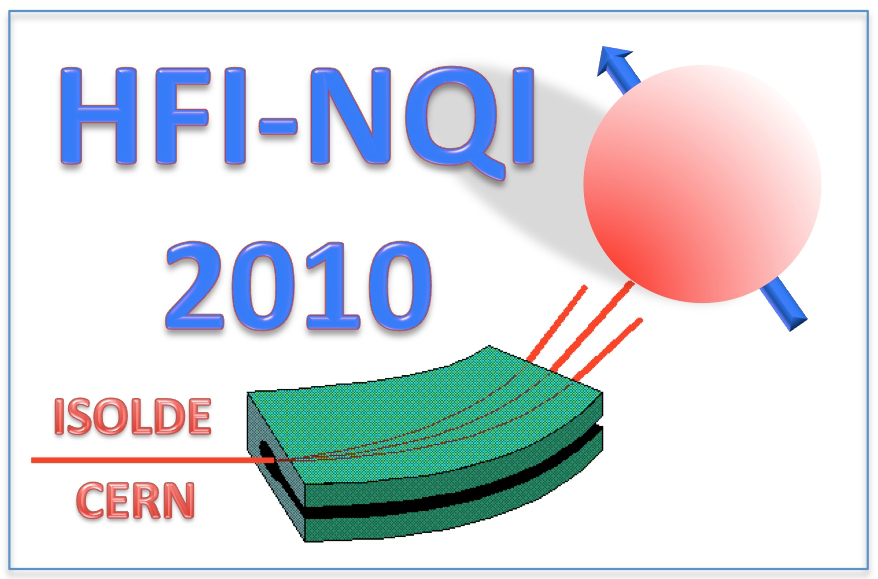Speaker
Prof.
Tilman BUTZ
(University of Leipzig)
Description
The nuclear quadrupole interaction is described as the product of the nuclear quadrupole moment Q with the electric field gradient (EFG) tensor. This is a symmetric, trace-less 3x3 tensor which usually is described by two quantities in the principle coordinate system: the largest component by magnitude is denoted by Vzz and the asymmetry parameter is defined as h = (Vxx – Vyy)/Vzz. Frequently, these two quantities are determined for powder samples as a function of an external variable, e.g. temperature. It is customary to plot both quantities separately versus temperature. This, however, masks any eventual interdependencies of the two quantities. A better way to plot the results is to plot Vzz and Vxx in a carthesian plot, or better in a Czjzek-plot [1], a variant of the carthesian plot, which is still linear in both variables. Each data pair of Vzz/Vxx constitutes a point in this plot with temperature being the implicit parameter. Connecting all points by a continuous line yields a trajectory. This trajectory is continuous even when passing over h = 1 where the tensor orientation flips by 90° and the sign of Vzz changes.
Interestingly enough, there are many examples where a straight trajectory is observed, i.e. both variables depend linearly on each other. This can be modelled by a linear superposition of two tensors which are simultaneously diagonal and temperature independent:
V = V1 + a(T)V2.
The only temperature dependent quantity is a(T), the control parameter. In this situation it is clear that fitting 2n independent parameters for n temperature points is wrong. Instead, a scale factor and a slope should be fitted in addition to n values for a(T), i.e. there are n+2 independent parameters only. The slope is given by the asymmetry parameter of V2, which is the asymptotic asymmetry parameter of V for large a. V2 must have a physical interpretation, contrary to V1 which can be modified by shifting a (unless we know where a must be 0, i.e. if a is an order parameter). The temperature dependence of a contains all solid state information like lattice expansion, lattice vibrations, and changes in the electronic charge density distribution.
The correct strategy for the data analysis would be to analyze the data conventionally, plot the data in the Czjzek-plot, and for a straight trajectory perform a simultaneous fit of all data with n+2 adjustable parameters in a second tier.
Another interesting class of systems can be described by a linear superposition of two tensors which are not simultaneously diagonal in the same principle coordinate system but which share one common coordinate around which the other two rotate. In other words, only a 2x2 matrix has to be diagonalized. The structure of the resulting eigenvalues (Vieta’s formula) is such that by using the sum and the product of both the control parameter can be eliminated straightforwardly and second order curves result which must be hyperbolae because we require asymptotes. In this case we require n+3 adjustable parameters, i.e. a scale factor, the asymptotic asymmetry parameter and one off-diagonal element which describes the rotation in addition to n values for a. Again, a simultaneous fit of all data is required in a second tier.
Examples of experiments with linear and hyperbolic trajectories will be given.
[1] G. Czjzek, Hyperf, Interact. 14,184, (1984); T. Butz et al., Physica Scripta 54,234, (1996)
Oral presentation
Author
Prof.
Tilman BUTZ
(University of Leipzig)
